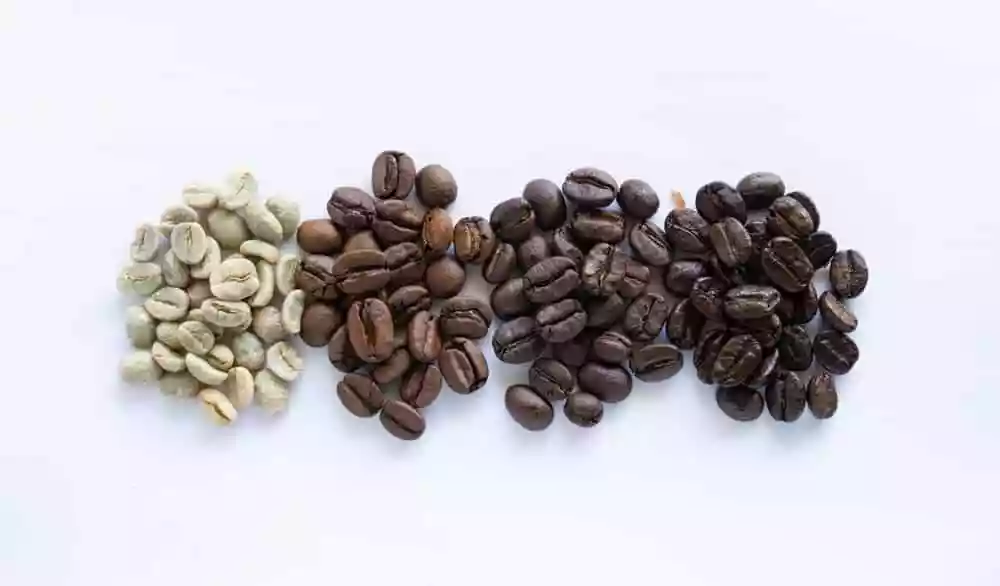Coffee has become a ubiquitous part of modern life, with people around the world starting their day with a cup of joe. However, not all coffee is created equal, and choosing the right blend is essential to getting the perfect cup. Coffee blends are a combination of different coffee beans that have been blended to create a unique flavor profile.
In this beginner’s guide, we’ll explore everything you need to know about coffee blends, from what they are to how to choose the right one for your taste preferences.
Blending coffee has been a common practice for centuries, and for good reason. Different coffee beans from around the world have unique flavor profiles that can be combined to create a complex and nuanced taste. Coffee roasters blend beans to achieve a desired taste, aroma, and body, and to balance out any undesirable characteristics of individual beans.
When choosing a coffee blend, it’s important to understand what makes each one unique. Factors like the type of beans used, the growing region, and the roasting method can all impact the final taste. By understanding these factors, you can make an informed decision about which blend is right for you.
In the following sections, we’ll dive deeper into the world of coffee blends and explore the different types of blends, how to choose the right one for your taste preferences, and how to brew the perfect cup. Let’s get started!
What is a Coffee Blend?
A coffee blend is a combination of two or more different coffee beans that are blended together to create a unique taste and aroma. Coffee blends can be made up of beans from different growing regions, or even different countries, and can be a mix of both Arabica and Robusta beans. Each coffee bean has its own unique flavor profile, which is why blending beans can create a more complex and nuanced taste that can’t be achieved with a single-origin coffee.
There are several reasons why coffee roasters blend beans. One reason is to create a more balanced flavor profile. For example, a roaster may blend a coffee bean that has a bright, fruity taste with another bean that has a more earthy flavor to create a well-rounded flavor profile. Another reason to blend beans is to create consistency from one batch to another. By blending beans, roasters can ensure that the taste, aroma, and body of the coffee remains consistent over time.
The art of blending coffee beans has been around for centuries, and it takes a skilled roaster to create the perfect blend. Roasters must consider the flavor profiles of each bean, as well as the roast level, when blending beans. They may use different percentages of each bean in the blend to achieve the desired taste and aroma.
One of the benefits of coffee blends is that they can cater to different taste preferences. For example, a blend that has more Robusta beans may have a stronger and more bitter taste, while a blend that has more Arabica beans may have a sweeter and more complex taste. By experimenting with different blends, you can find the perfect one that suits your taste preferences.
In the next section, we’ll explore the different types of coffee blends and what makes each one unique.
Types of Coffee Blends
There are several types of coffee blends, each with its own unique taste profile. Here are some of the most common types of coffee blends:

- Espresso Blend – This type of blend is specifically designed for espresso machines. Espresso blends are typically made up of darker roasted beans, which have a stronger flavor and are less acidic. The beans used in an espresso blend are often from different growing regions to create a well-rounded flavor profile.
- Breakfast Blend – This is a lighter roast coffee blend that is perfect for starting your day. Breakfast blends are typically made up of beans from different growing regions, and have a milder flavor profile with a slight acidity. They are often described as having a nutty or fruity taste.
- French Roast Blend – This blend is made up of beans that are roasted to a dark brown color. French Roast blends have a strong, smoky flavor with a rich and bold aroma. They are typically made up of a mix of different beans, including Robusta beans, which give them their bold taste.
- House Blend – A house blend is a coffee blend that is unique to a particular coffee shop or roaster. These blends are often made up of a mix of different beans to create a signature taste that is exclusive to that particular coffee shop or roaster.
- Single Origin Blend – This type of blend is made up of beans from a single growing region or country. Single origin blends allow you to experience the unique flavor profile of a particular region or country. For example, a single origin blend from Ethiopia may have a floral and fruity taste, while a single origin blend from Colombia may have a nutty and chocolatey taste.
When choosing a blend, consider the roast level, flavor profile, and brewing method to ensure that you get the perfect cup of coffee every time. In the next section, we’ll explore how to choose the right coffee blend for your taste preferences.
Understanding Coffee Beans
To fully understand coffee blends, it’s important to understand the different types of coffee beans that are used in the blending process. The two most common types of coffee beans are Arabica and Robusta.
Arabica Beans – Arabica beans are the most commonly used beans in coffee blends. They are grown at higher elevations and in cooler temperatures, which results in a slower maturation process. This slower maturation process allows the beans to develop a more complex flavor profile. Arabica beans have a lower caffeine content and a smoother taste with a higher level of acidity. They are often described as having a sweeter, more nuanced flavor.
Robusta Beans – Robusta beans are grown at lower elevations and in warmer temperatures, which results in a quicker maturation process. They have a higher caffeine content and a stronger, more bitter taste with a lower level of acidity. Robusta beans are often used in espresso blends to add a bold, rich flavor and a thick crema.
When it comes to choosing the right coffee blend, it’s important to consider the type of bean used in the blend. If you prefer a smoother taste with more nuanced flavors, choose a blend that is made up of Arabica beans. If you prefer a stronger, bolder taste, choose a blend that has a higher percentage of Robusta beans.
In addition to the type of bean used, the roast level also plays an important role in the taste and aroma of the coffee. Lighter roasts have a milder taste with a higher level of acidity, while darker roasts have a stronger taste with a lower level of acidity. When choosing a blend, consider the roast level that best suits your taste preferences.
Choosing the Right Coffee Blend
Choosing the right coffee blend can seem overwhelming with so many options available. Here are some factors to consider when selecting the perfect blend for you:
Flavor Profile – Coffee blends can have a wide range of flavor profiles, from light and fruity to bold and smoky. Consider the taste notes listed on the packaging or website description to get an idea of what to expect. If you prefer a milder taste, go for a blend with fruitier notes. If you like a strong, full-bodied flavor, choose a blend with darker, smokier notes.
Roast Level – As mentioned in the previous section, the roast level of a coffee blend can greatly impact the taste and aroma. If you prefer a lighter, milder flavor with a higher acidity level, go for a light roast. If you prefer a bolder, richer taste with a lower acidity level, choose a dark roast.
Origin – Coffee beans are grown all around the world, and each region produces beans with unique flavor profiles. For example, African beans tend to have a bright, fruity taste, while Central American beans have a more chocolatey, nutty flavor. Consider where the beans in the blend are sourced from to get an idea of what to expect in terms of taste.
Intended Use – Different blends may be better suited for different brewing methods. For example, a blend that is great for drip coffee may not work as well for espresso. Consider how you plan to brew your coffee and look for blends that are recommended for that brewing method.
Personal Preferences – At the end of the day, the most important factor in choosing a coffee blend is your personal taste preferences. Don’t be afraid to try new blends and experiment to find the perfect fit for you.
Remember to always use high-quality beans and store them properly to ensure the best possible flavor. In the next section, we’ll go over some brewing tips to help you get the most out of your chosen coffee blend.
How to Brew Coffee Blends
Once you’ve chosen the perfect coffee blend, it’s time to brew it to perfection. Here are some tips for getting the most out of your coffee blend:

Grind your beans properly – Different brewing methods require different grind sizes. For example, a coarse grind is best for a French press, while a fine grind is ideal for espresso. Be sure to grind your beans to the appropriate size for your chosen brewing method.
Use the right water temperature – The ideal water temperature for brewing coffee is between 195-205°F (90-96°C). If the water is too hot, it can scorch the beans and produce a bitter taste. If the water is too cold, it won’t extract enough flavor from the beans.
Use the right brewing method – Different brewing methods can produce vastly different flavors, even when using the same blend of coffee. Some common brewing methods include drip coffee, French press, pour-over, and espresso. Experiment with different methods to find your preferred taste.
Use the right brewing ratio – The ideal brewing ratio for coffee is generally 1-2 tablespoons of coffee per 6 ounces of water. However, this can vary depending on personal taste preferences and the brewing method used.
Store your beans properly – Proper storage is key to maintaining the freshness and flavor of your coffee blend. Store your beans in an airtight container in a cool, dark place, away from moisture and direct sunlight.
Don’t be afraid to try new things and tailor your brewing process to your personal taste preferences. In the next section, we’ll go over some common misconceptions about coffee blends.
Conclusion
Coffee blends offer a world of possibilities for coffee lovers. With so many different blends available, there is something for everyone’s taste preferences. Whether you’re a beginner or a seasoned coffee aficionado, understanding the different types of blends, the characteristics of coffee beans, and the best brewing methods can help you choose the perfect coffee blend and brew it to perfection.
Remember, the key to a great cup of coffee is experimentation and practice. Don’t be afraid to try new blends, brewing methods, and ratios to find your perfect cup of coffee. And don’t forget the importance of proper storage to maintain the freshness and flavor of your coffee beans.
We hope this beginner’s guide to coffee blends has been helpful in your journey to becoming a coffee expert. So go ahead, grab your favorite coffee blend, and enjoy a delicious cup of coffee!
A. I. Moon
A.I. Moon, an experienced SEO Pythonista, spends his days coding and developing web applications to help business owners. A passionate coffee enthusiast, he believes that drinking coffee fuels his creativity and productivity. His day isn't complete without the rich aroma and invigorating warmth of a perfectly brewed cup. This love for coffee inspired him to found EspressoRivo, a platform dedicated to sharing his coffee knowledge and fostering a community of passionate aficionados.





